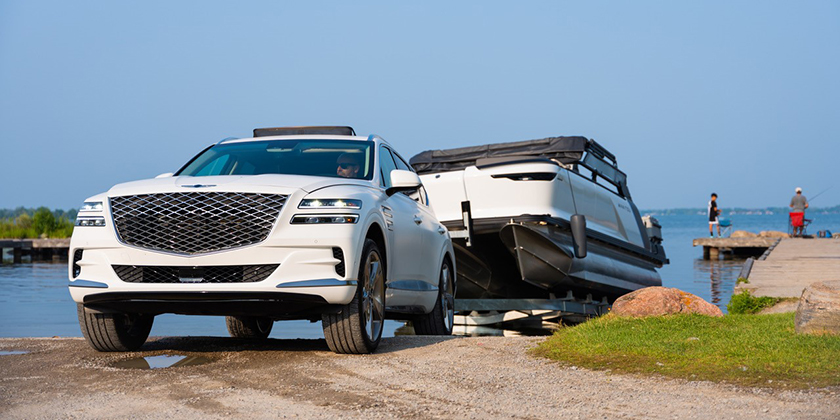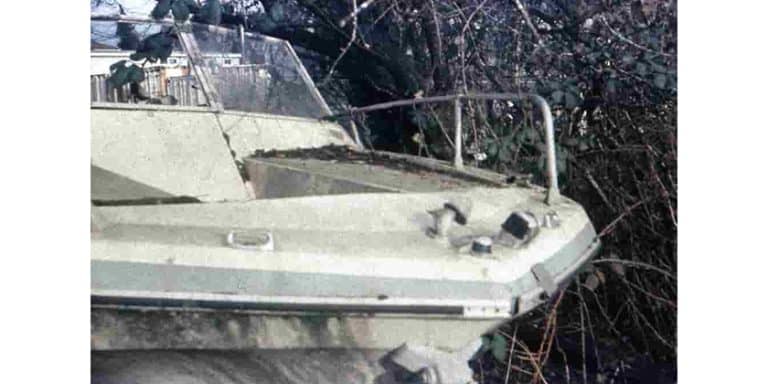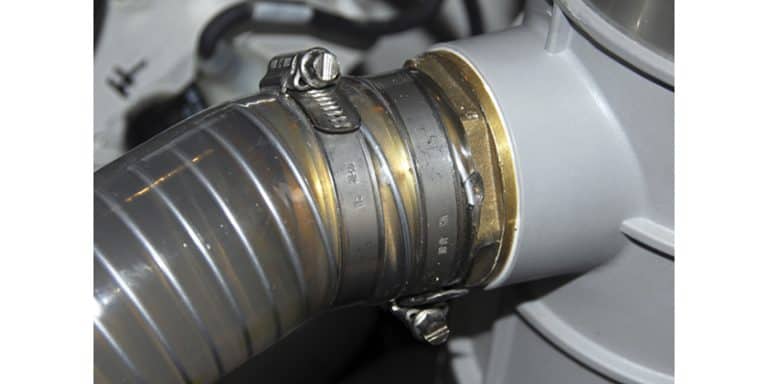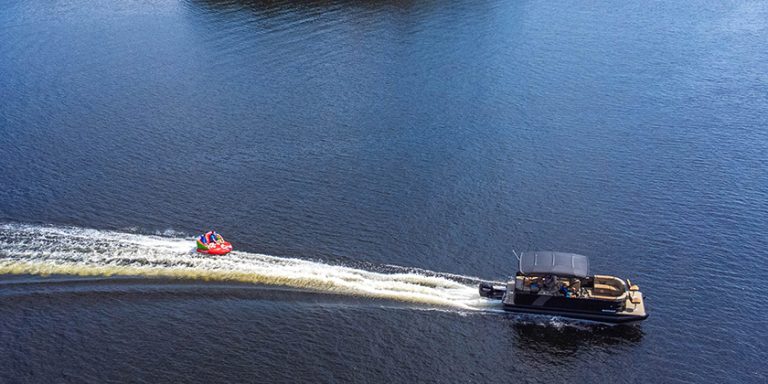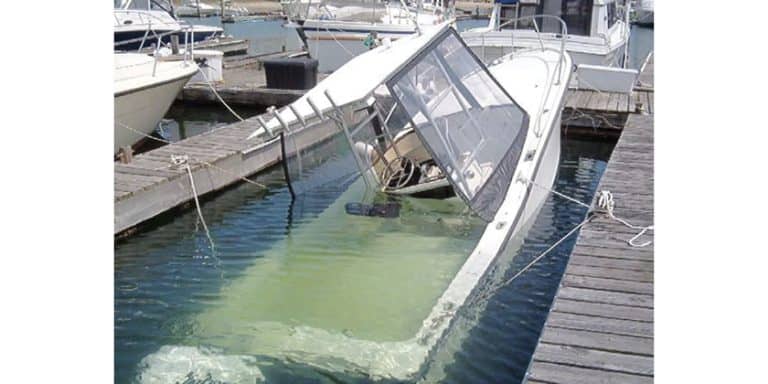Trailering: Go boating where you want with a trailer boat rig
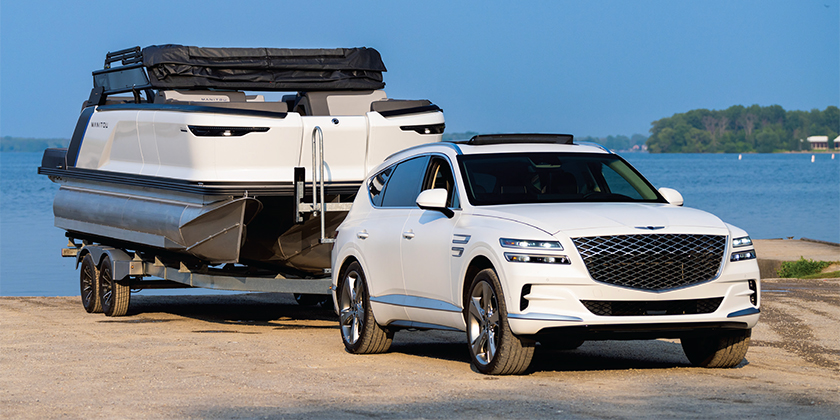
Photo: Genesis Canada
By Andrew McDonald
Social media is an interesting place. Ranging from entertainment to how-to videos, there’s a little something for everyone. Boating-specific Instagram pages that celebrate ‘boat-fails’ are wildly popular. Instagram pages like The Qualified Captain (@thequalifiedcaptain) boast millions of followers, with content focused on failures, rather than on education. Not surprisingly, things going awry at the launch ramp are featured regularly.
There are probably experts who know the exact statistics, but in broad strokes: People engaging in boating is on the rise. The vast majority of new boaters don’t have significant previous experience, and many people entering boating have discovered it on their own, without friends or family to guide them in acquiring skills or technique. It’s no surprise that boat-fails abound.
There is a recognized need to add to the toolbox of tips and techniques to make things like trailering, launching and recovering at any launch ramp safe and easy.
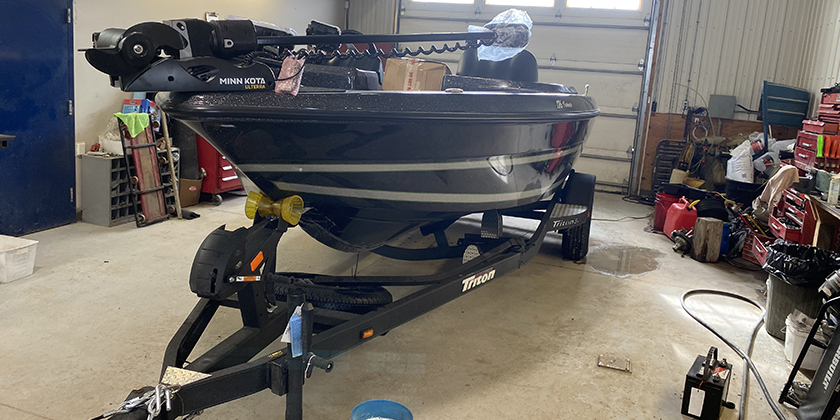
Getting started
There are lots of important rules (Federal and Provincial law and the Highway Traffic Act) with respect to trailering. The most important first considerations should be: Can my vehicle handle the job? Is my trailer road-worthy? Do I have all the components in working order that will allow me to be safe and secure while driving?
Your starting point should be to review the license, vehicle and trailer’s limits. A G -license allows an operator to drive a car, van or small truck – or a combination of vehicle and towed vehicle up to 11,000kg (provided the vehicle being towed is not over 4600kg).
The car, van or truck being used to tow will have a towing capacity. This is the amount that it is rated to safely tow, given the gross vehicle weight, the handling characteristics, the braking ability and strain on the drive-train. As an example: A 2023 Dodge Caravan mini-van has a towing capacity of 1,633 kg (3,600 lbs), whereas a 2020 Ford F-150 truck has a towing capacity of 5,909kg (13,000 lbs).
Next, the equipment required to tow (the hitch and the ball) will also have ratings and class levels, based on the weight being towed.
Finally – each trailer will have its own rating sticker which will describe its weight capacity; the weight of the boat that the trailer itself can carry.
Once you’ve established that the vehicle and trailer and hitch connection are up to the job, you’re ready to hit the road and head to the water.
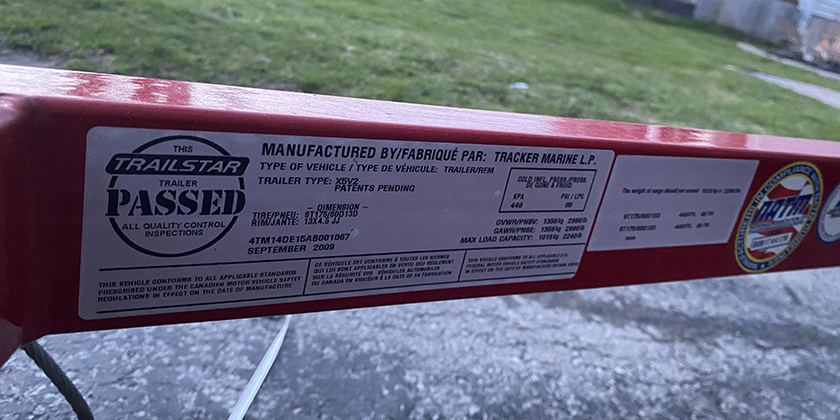
Travelling
Before pulling away, check the following:
- That the bow strap is tight, in good condition, and the bow of the boat is resting on the bow roller.
- That the winch is tight and locked in place, and that the locking mechanism is working well.
- That the transom is strapped to the trailer using two appropriately rated tie-downs.
- That all of the lights are set up and function correctly: running lights, brakes, signals. There are 3 different light configurations, depending on the width of the trailer:
- under 80” wide: tail light, stop light, turn signals, side markers and license light
- Over 80” wide additionally requires: a rear clearance light, rear identification light, and front clearance light
- Over 102” wide: requires special permits.
- There are multiple types and configurations of vehicle-to-trailer electrical connections, and adaptors/extenders are available to marry the different types together.
i) 4-wire flat connection
ii) 5-wire flat connection
iii) 6-way round connection
iv) 7-way round connection
- That the tires have sufficient air pressure (per the trailer sticker), that the wheel lugs are torqued to spec, and that the wheel bearings are in good condition.
- That the trailer is level when connected to the tow vehicle. If it isn’t, some adjustments will be needed, either by changing the style of ball mounts to raise or lower the front of the trailer in relation to the tow vehicle, or by adding stabilizer bars.
- That the ball is the right size to match the trailer hitch coupler, and that the coupler is in good condition and secured with a lock or pin
- That the safety chains are of the correct grade and that they are secured. The chains should be crossed over, creating a type of ‘basket’, so that if the coupler separates from the ball, the trailer tongue will fall into the basket, rather than hitting the ground.
- That the tongue jack operates smoothly and is the right height for the application
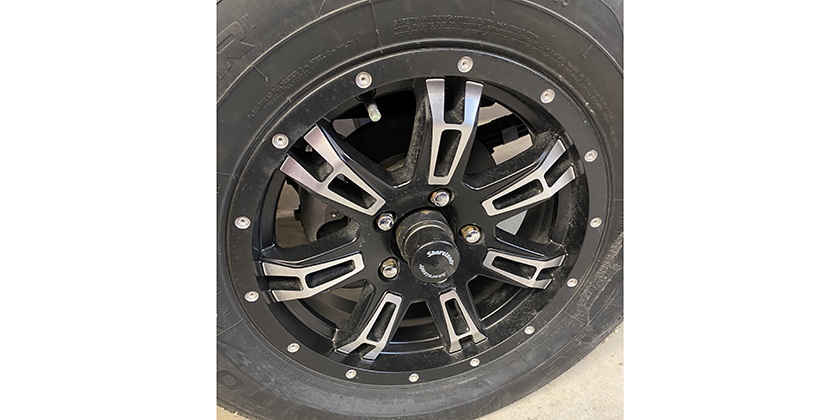
Putting it all into action
You’re safe and on the road. Keep your turns wide and watch the trailer position through your side mirrors. You’ll note that much more time is needed for acceleration and braking.
When operating in reverse, small corrections should be made, and if in doubt, drive forward to re-correct and try again. If the trailer has brakes, the electrical connection will need to be solid; the brakes will lock without it. If you aren’t familiar with backing up a trailer; practice, practice, practice!
I take the following steps when setting up at a launch:
- Back up straight into position and stop the trailer a few feet from the water’s edge.
- Put the parking brake on the vehicle to keep it secure despite the grade toward
sthe water - Re-check the electrical connection. If the trailer is equipped with brakes, the electrical system should remain connected. If the trailer doesn’t have brakes (a flat 4-pin connector), remove the connection. This is an extra precaution to prevent any issues from backing a trailer into water with any bad electrical connections. This can lead to a blown fuse in the vehicle.
- Remove the transom straps and double-check that the hull drain plug is in place.
- Back the trailer into the water until the boat is lightly floating
- Tie the boat to the dock to secure it
- Step carefully onto the trailer frame to access the winch to loosen the bow strap and remove the connection and safety chain
- Walk the boat backwards off the trailer and tie it securely to the dock.
- Drive forward until the trailer is out of the water. Secure all the trailer components before parking
- Enjoy your boat ride!
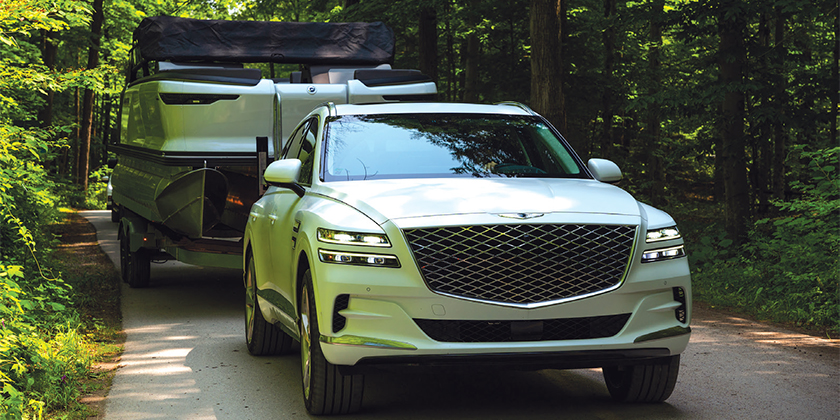
After a day on the water
A few aftercare tips:
- Recovering and trailering the boat after use is essentially the same process in reverse. I’m a fan of walking the boat on and off the trailer, but ‘power-loading’ (driving the boat onto the trailer) is a common practice
- Using trailer guides that are higher than the water’s surface makes this much easier
- Be sure to remove the hull plug after every trip and fully drain and dry the boat, so that bodies of water aren’t cross-contaminated with invasive water species.
- Once parked, be sure to check the tires and bearings (they are particularly affected by being regularly submerged in water and then left to sit for long periods of time). Be sure to chock the wheels so that the trailer doesn’t move or shift
- Try to store the trailer so that the boat is left level (not bow-down) and consider upgrading to a swing-tongue trailer if storage space is tight.
Following some of these steps (practice, practice, practice) will help to avoid social media infamy – and may even paint you as a local launch-ramp expert. Trailering is a learned skill – and with some support and encouragement, and a toolbox full of techniques, we can all do this well – Happy Trailering!
